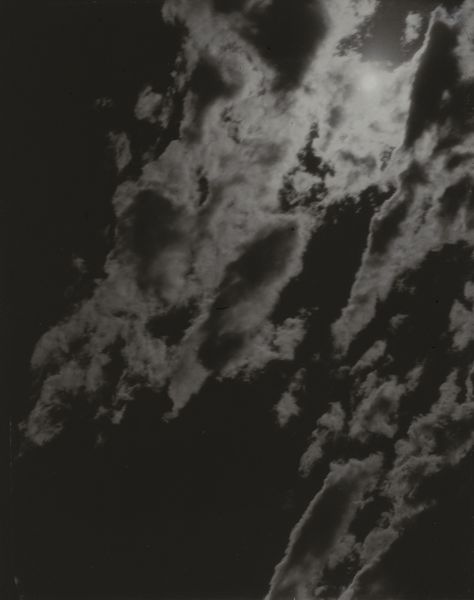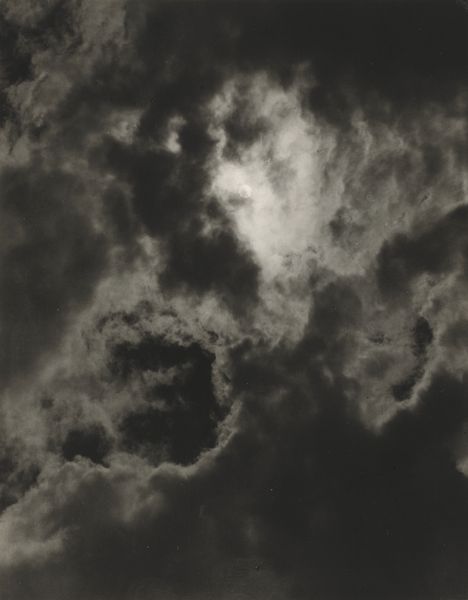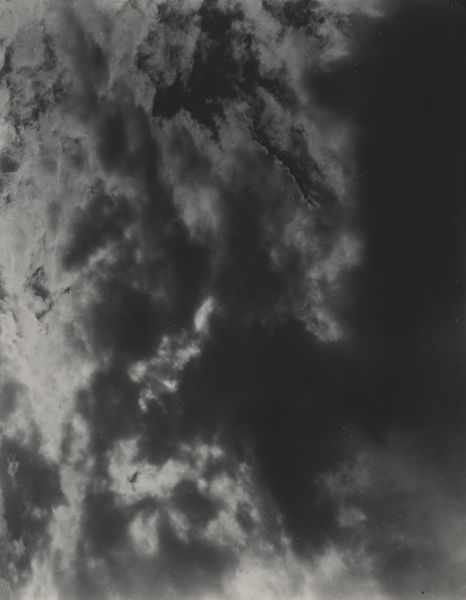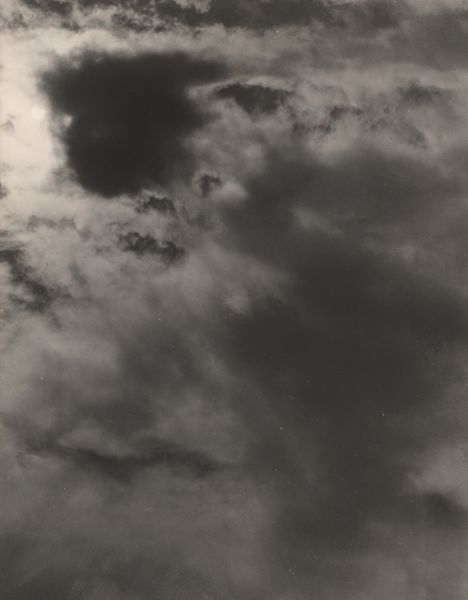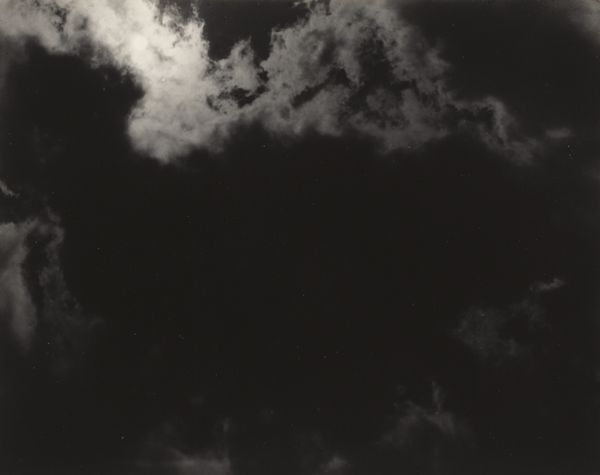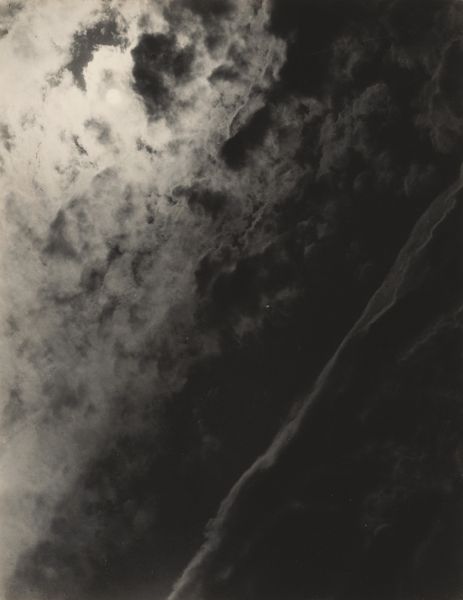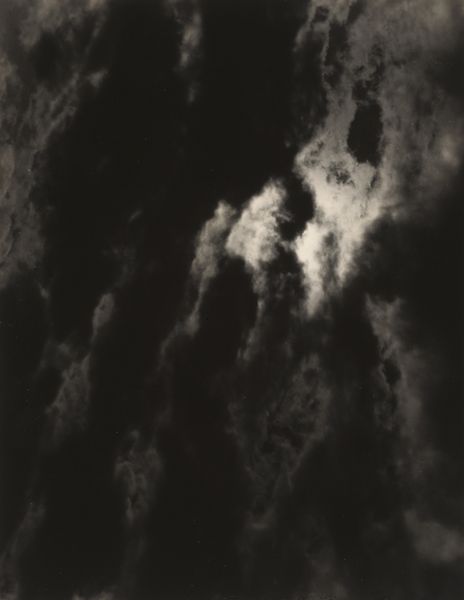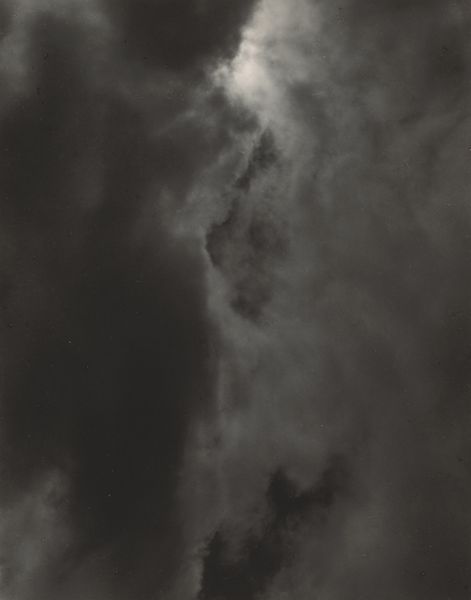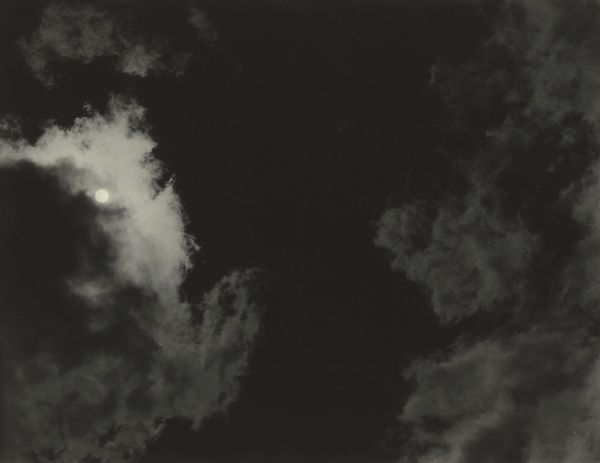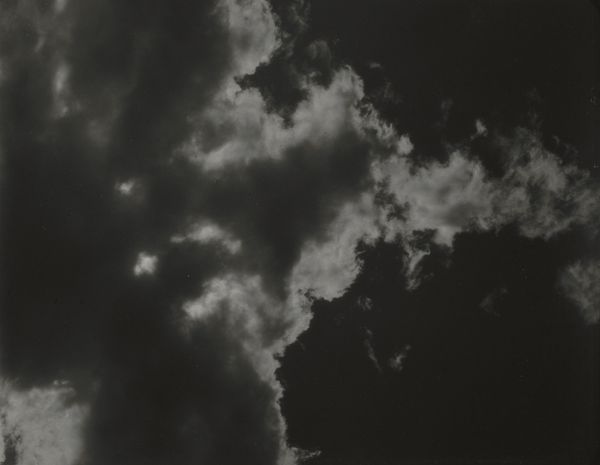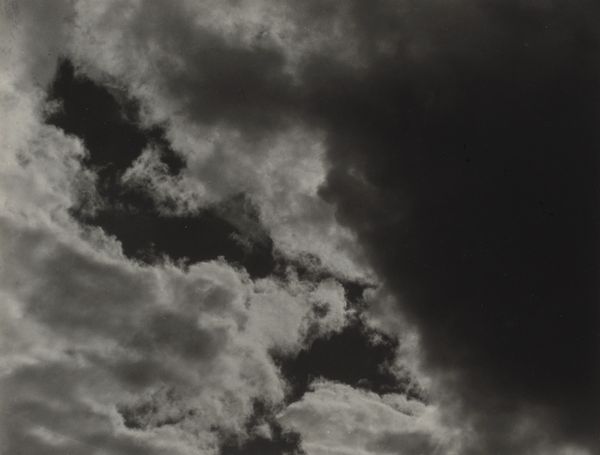
photography, gelatin-silver-print
#
cloudy
#
twilight
#
black and white photography
#
snowscape
#
landscape
#
photography
#
low atmospheric-weather contrast
#
gelatin-silver-print
#
monochrome photography
#
gloomy
#
abstraction
#
monochrome
#
modernism
#
mist
#
monochrome
#
shadow overcast
Dimensions: sheet (trimmed to image): 11.8 x 9.2 cm (4 5/8 x 3 5/8 in.) mount: 35 x 27.6 cm (13 3/4 x 10 7/8 in.)
Copyright: National Gallery of Art: CC0 1.0
Editor: This is Alfred Stieglitz's photograph, "Songs of the Sky or Equivalent," created between 1923 and 1929. It’s a gelatin silver print, and it really strikes me with its stark contrasts and almost oppressive mood. What do you make of this work? Curator: Well, viewing this through a historical lens, these cloud photographs, which Stieglitz termed "Equivalents," were produced during a pivotal period for modernism. Stieglitz was consciously moving photography into the realm of fine art. What societal anxieties, do you think, might be reflected in this move towards abstraction and a focus on ephemeral subjects like clouds? Editor: I guess after the First World War, maybe there was a feeling that traditional representation was inadequate to capture the trauma and uncertainty? Curator: Precisely. Stieglitz’s turn to abstraction and his denial of overt symbolism in favor of "equivalents" reflects a wider disillusionment with established systems of meaning. He aimed to elicit emotion, to express internal states, through these seemingly objective records of the sky. This was deeply intertwined with his promotion of photography as a legitimate art form on par with painting and sculpture. Consider also, how institutions were validating photography at this time, providing spaces and critical discourse around this work. Editor: That’s interesting. So it’s not just about the artistic expression but about shaping the art world's perception of photography itself. Do you think he was successful? Curator: Absolutely. Stieglitz's advocacy and these images significantly shifted the landscape, challenging existing hierarchies. It made way for subsequent generations of photographers to push the boundaries of the medium. Editor: I never considered how much this photograph pushed the boundaries of its time. Thanks for shining a light on this! Curator: My pleasure! It’s a reminder that art isn’t just about the image; it’s about its role and reception in the ongoing narrative of culture.
Comments
No comments
Be the first to comment and join the conversation on the ultimate creative platform.
